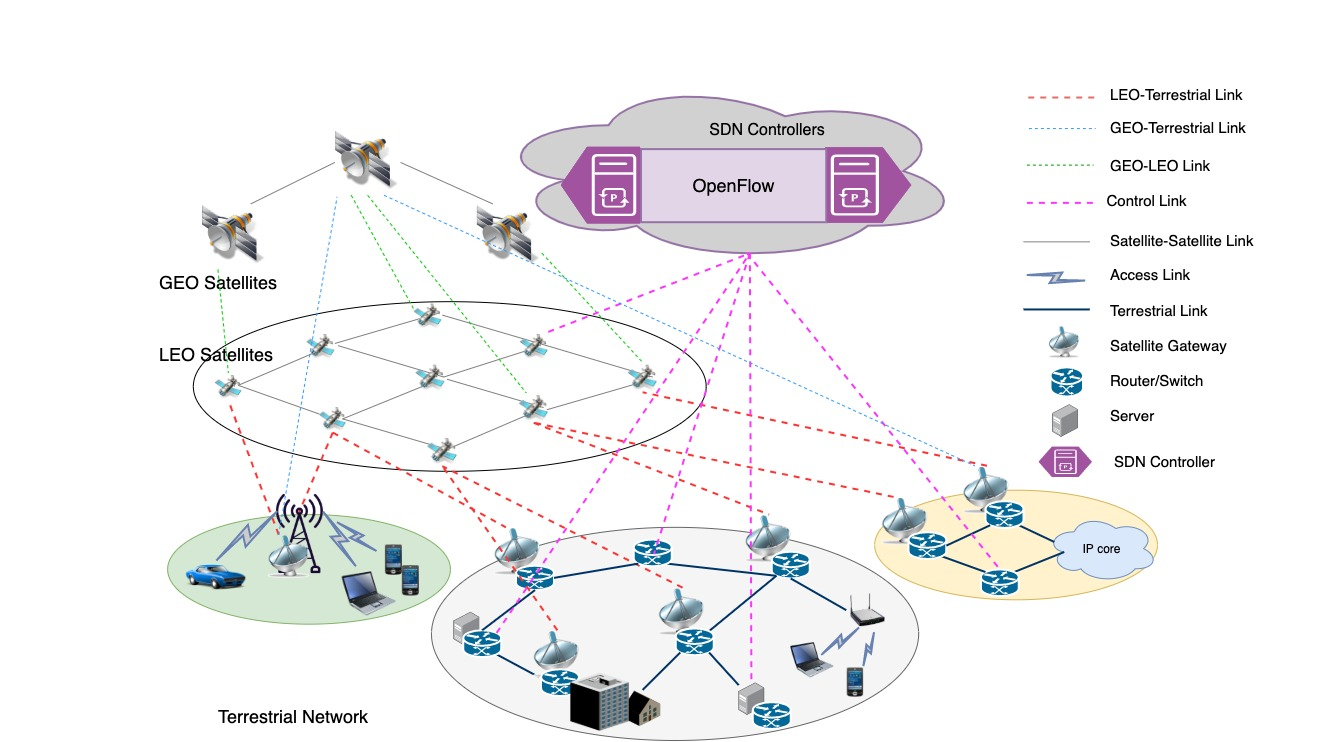SDN-enabled Integrated satellite-terrestrial networks (ISTNs), can provide several advantages including global seamless coverage, high reliability, low latency, etc. and can be a key enabler towards next generation networks. To deal with the complexity of the control and management of the integrated network, leveraging the concept of software-defined networking (SDN) will be helpful. In this regard, the SDN controller placement problem in SDN-enabled ISTNs becomes of paramount importance. In this paper, we formulate an optimization problem for the SDN controller placement with the objective of minimizing the average failure probability of SDN control paths to ensure the SDN switches receive the instructions in the most reliable fashion. Simultaneously, we aim at deploying the SDN controllers close to the satellite gateways to ensure the connection between the two layers occurs with the lowest latency. We first model the problem as a mixed integer linear program (MILP). To reduce the time complexity of the MILP model, we use submodular optimization techniques to generate near-optimal solutions in a time-efficient manner. Finally, we verify the effectiveness of our approach by means of simulation, showing that the approximation method results in a reasonable optimality gap with respect to the exact MILP solution.
翻译:由 SDN 带动的SDN 综合卫星地球网络(ISDN ) 可以提供若干优势,包括全球无缝覆盖、高可靠性、低潜值等,并可以成为下一代网络的关键促进器。 处理综合网络控制和管理的复杂性,利用软件定义的网络(SDN)概念将是有益的。 在这方面, SDN 带动的SDN 综合卫星终端设置SDN 控制器问题变得至关重要。 在本文件中,我们为SDN 控制器的定位设计了一个优化问题,目的是尽可能减少SDN 控制器的平均失灵概率,以确保SDN 开关以最可靠的方式获得指示。 同时,我们的目标是在卫星网关附近部署SDN 控制器,以确保两个层之间的连接与最小的连接。 我们首先将问题作为混合整线性程序(MILP ) 模拟问题。 为了降低MILP 模型的时间复杂性,我们使用亚模优化优化技术来产生近最佳的解决方案。 最后,我们通过模拟方式核查我们的方法的有效性,以最优的分辨率显示精确方法的结果。






